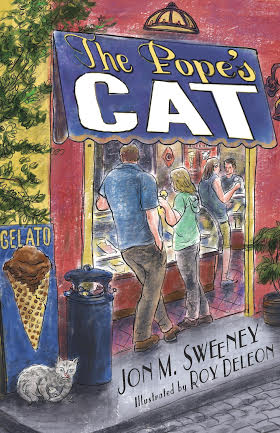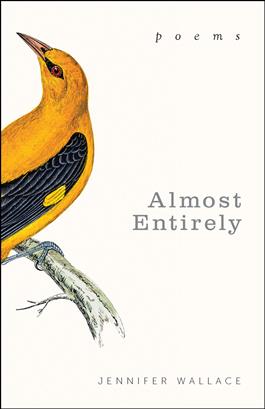This review for Still Pilgrim was published in Adanna, Issue 7, 2017.
Maryanne Hannan
To a world where stillness is elusive, the notion of pilgrimage quaint, and paradox an intellectual stretch, Angela Alaimo O’Donnell serves up her latest collection, Still Pilgrim: Poems (Paraclete Press, 2017). In truth, I have been a fan of O’Donnell’s work for many years, her seven poetry collections, three non-fiction books, her numerous insightful reviews and essays. But I’d hazard a guess that Still Pilgrim will become a classic, one that readers will turn to for many years to come.
 An author Afterword describes the genesis of the project, a visit to Herman Melville’s grave near her home. In the poem she wrote about that experience, she addressed him as “still pilgrim,” and was thereafter struck by the many ways it is conceivable and necessary to be both still and “simultaneously on pilgrimage toward one’s destiny” (Afterword, 70) in life and, in Melville’s case as a writer, after death. In this collection, O’Donnell takes up the challenge of probing the tensions and insights in the oxymoronic persona of a “still pilgrim,” using the stuff of her own life.
An author Afterword describes the genesis of the project, a visit to Herman Melville’s grave near her home. In the poem she wrote about that experience, she addressed him as “still pilgrim,” and was thereafter struck by the many ways it is conceivable and necessary to be both still and “simultaneously on pilgrimage toward one’s destiny” (Afterword, 70) in life and, in Melville’s case as a writer, after death. In this collection, O’Donnell takes up the challenge of probing the tensions and insights in the oxymoronic persona of a “still pilgrim,” using the stuff of her own life.
Despite the many particulars of time, space, event and personal proclivities, the book never seems autobiographical. Carefully constructed, yes; as described in the Afterword, it contains a prologue and an epilogue, four sections of poems, fourteen poems per section all of them (fourteen line) sonnets. The gloss on the book and its further suggestion that the sections correspond to seasons of the year and the seasons of life, as well as the liturgical calendar can be read as an added bonus, or as a belated surprise. The poems themselves, sonnets of great skill and diversity, speak for themselves, or in the words of the Still Pilgrim, “Every pilgrim is a truthteller. / Every pilgrim is a liar.” (“Prologue: To Be a Pilgrim, xiii) In this spirit, all is made new again.
Unlike the traditional Pilgrim’s Progress, O’Donnell’s contemporary pilgrim need not advance under the rubric of steady improvement, yet develops in her own way from one section to the next. Rather than negotiating a larger universality as the allegorical hero Christian does, this pilgrim, clothed in particulars, manages the same. Many of O’Donnell’s poems play off Catholic-Christian references, as well as familiarity with literary figures, Keats, Shakespeare, Wordsworth, Frost and, of course, Flannery. To enjoy the subtleties, the poignancy and even the humor of this book, readers need to share the pillars of O’Donnell’s spiritual-cultural-intellectual world, but not her dogma.
Each section offers a, shall we call it?, cosmologically chronological development: “The Still Pilgrim Invents Dawn,” “The Still Pilgrim Recreates Creation,” “The Still Pilgrim Considers a Hard Teaching,” and “The Still Pilgrim Recalls the Beatitudes.” Each section ends with an assessment of where the poet might be in her personal chronology: “The Still Pilgrim Runs,” “The Still Pilgrim Gives Herself Driving Directions,” “The Still Pilgrim Addresses Father Solstice,” and “The Still Pilgrim’s Refrain.” The poem titles themselves further the tensions and paradoxes of the central “still pilgrim” metaphor.
If, as O’Donnell suggests, the sections correspond to the seasons of life, then no surprise to discover poems of youth and childhood in the first section: “The Still Pilgrim Recollects Her Childhood,” “The Still Pilgrim Honors Her Mother,” “The Still Pilgrim Learns to Write,” to name a few. But, as a group, they are not typecast or expected. My favorite “The Still Pilgrim Tells a Fish Story” evoking Melville goes against the grain. From “Find the fish you need to kill and kill it,” the first line challenge, the poem concludes: “Did you really believe there’d come a day / when you would be the one that got away?” (13). A nice set-up for the last poem, mentioned above: “She ran like rage. She ran like desire. / She ran like a woman catching fire” (“The Still Pilgrim Runs,” 16).
The second section sees more gain than loss, the prime of life: “The Still Pilgrim Becomes a Mother,” “The Still Pilgrim Sings to Her Child,” “The Still Pilgrim Hears a Diagnosis,” “The Still Pilgrim Discovers Botero’s Adam & Eve.” Hovering over all is the realization: “Summer comes once and never stays” (“The Still Pilgrim’s Love Song to Lost Summer,” 31).
In the third section, (can it be autumn already?) are “The Still Pilgrim’s Displacement,” “The Still Pilgrim’s Insomnia,” “The Still Pilgrim Talks to Her Body,” “The Still Pilgrim Faces the Wall,” the final couplet of “The Still Pilgrim Considers the Eye:” “The truth the wise eye grieves and knows, / that one day it must close” (43). But a radical acceptance of mortality undergirds it all: “You sing with me even when / I sing the same old song again” (“The Still Pilgrim Talks to Her Body,” 42)
The fourth section opens with another dawn, slightly reminiscent of Eliot: “of how we bear the miracle / and find ourselves where we belong” (“The Still Pilgrim’s Thoughts Upon Rising,” 51). Other poems attest to a joyful resiliency, even a recognition that each season contains them every other one: “The Still Pilgrim Recounts Another Annunciation,” “The Still Pilgrim’s Easter Morning Song,” “The Still Pilgrim Imagines the Eucharist,” “The Still Pilgrim Welcomes Pentecost” and “The Still Pilgrim’s Penance.” Perhaps a time paradox underlies the space through which the still pilgrim traverses. Or to share the final couplet of “The Still Pilgrim Celebrates Spring:” “All that leaves returns. It’s fact. / The light we thought we lost comes back” (60).
Angela O’Donnell’s Still Pilgrim: Poems can be enjoyed as a whole and in parts, not once, but many times over. I highly recommend this book to all readers interested in a woman’s journey, expressed in the context of her faith, and also to those no longer excited by the sonnet form. They will be surprised.
 Paraclete Press announced Tuesday, January 23, that we are accelerating the publication date of The Pope’s Cat by Jon M. Sweeney, illustrated by Roy DeLeon. Originally announced to publish on March 13, the on-sale date is now March 1.
Paraclete Press announced Tuesday, January 23, that we are accelerating the publication date of The Pope’s Cat by Jon M. Sweeney, illustrated by Roy DeLeon. Originally announced to publish on March 13, the on-sale date is now March 1.

